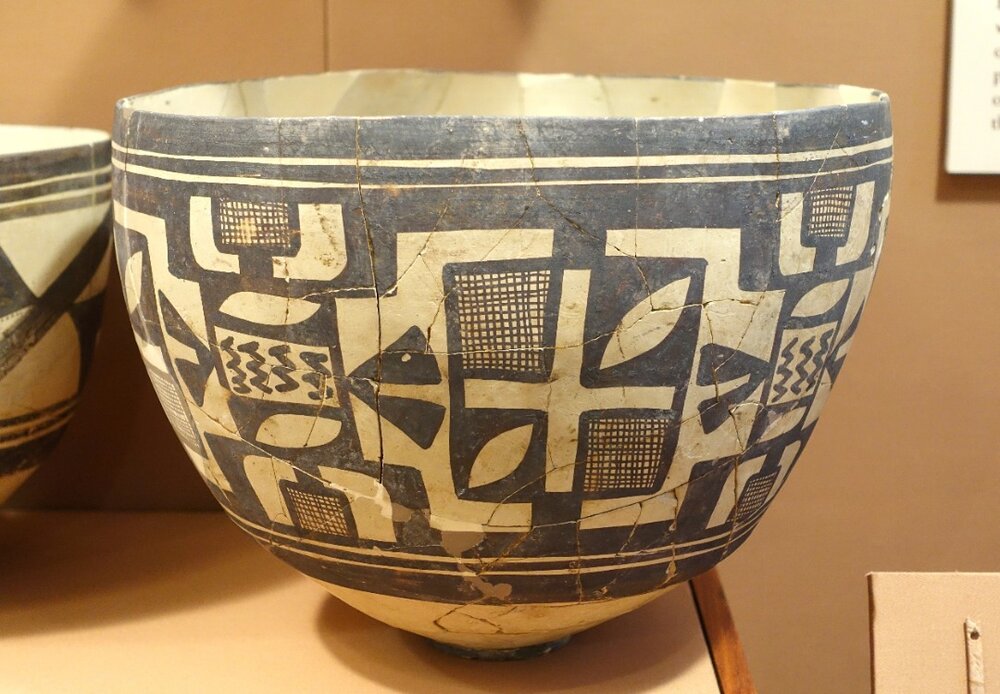Tall-e Bakun and its prominent role in study of early Iranian art

TEHRAN – Tall-e Bakun is a prehistorical twin site situated in the fertile Marvdasht plain of Fars province, near the UNESCO-designated Persepolis, the Achaemenid ceremonial capital.
Tall-e Bakun was continuously inhabited from c. 4200 to c. 3000 BC, expected to be the oldest yet discovered in that area of Iran.
Excavations in 1928 by the University of Berlin and 1932 by the University of Chicago uncovered several building levels, numerous flint implements, stamp and button seals, and many animal and human figurines, as mentioned by Britannica.
The painted pottery found at Tall-e Bakun displays a seemingly inexhaustible variety of geometric patterns and animal motifs and is especially important for the study of early Iranian art.
Bakun has played a prominent role in the understanding of the prehistory of Fars, partly because it was the first large-scale excavation of a prehistoric mound there, and primarily for the richness of its finds, according to the Oriental Institute of the University of Chicago.
Differentiated as Bakun A and Bakun B, the latter being earlier. Tall-e Bakun B (ca. 5000-4200 BC) was first excavated by Alexander Langsdorff and Donald McCown in 1932, and later in 1937 by Eric Schmidt and McCown on behalf of the Oriental Institute of the University of Chicago.
The painted pottery found at Tall-e Bakun displays a seemingly inexhaustible variety of geometric patterns and animal motifs and is especially important for the study of early Iranian art. Excavations at Bakun was part of a major Oriental Institute archaeological project in Iran, with Persepolis as the main focus and headquarters of the project. The results from the 1932 excavations were published (Langsdorff and McCown 1942); the materials from the 1937 season are now being prepared by Abbas Alizadeh, the Oriental Institute, for final publication.
As stated by the Oriental Institute, Tall-e Bakun B consists of two distinct cultural deposits; the lower deposit, Bakun BI, contained only layers of ash and debris with coarse redware; and the upper one, Bakun BII also did not contain architecture but yielded painted pottery.
The first season of excavations at Bakun A (ca. 4000-3500 BC) commenced in 1932. Work was concentrated on the northern part of the mound, where an area of about 1200 sq. meters was opened.
“Four occupational levels were reported, Level I being the lowest, and Level III being the best preserved and most extensively excavated. Level III contained a complex of buildings consisting of rectangular houses and warehouses with common walls. The buildings of Level III suggest a planned architectural layout; they are oriented northeast-southwest with nicely aligned and carefully abutted common walls. This level also produced most of the artifactual material including the clay sealings, which are primary indicators of ancient administrative technology,” according to the Oriental Institute.
The excavations yielded artifacts including pottery, animal and human figurines, spindle whorls, pottery tokens of various shapes and sizes, small, decorated, pottery pipes, firedogs, pottery wasters, stone maceheads and pounders, stone and clay sling missiles, large and miniature vessels of alabaster and local stones, flint and obsidian blades, scrapers, borers, and drills, finished and half-finished stone stamp seals, copper objects such as points and needles, chisels, a 25cm-long dagger, a stamp seal, and copper ores.
While many whole pottery vessels still in situ, some still containing animal and fish bones, were discovered from various buildings and warehouses in the northern complex, the primarily workshop areas in the central and southern areas (excavated in 1937) produced mostly potsherds, and the few whole jars, indicating specialized activity areas within the settlement.
The central and southern areas are markedly different from the northern complex of the 1932 season. The northern constructions of the 1932 season exhibit a planned architectural layout as can be discerned from the regularity in the spacing of the rooms and thickness of their walls. The architectural units of the central and southern quarters follow the same northeast-southwest orientation; they are not, however, as carefully constructed as the units of the northern complex. Also, these units are surrounded by open areas containing kilns of various sizes and covered with layers of debris and ash.
The wealth and variety of material items at Bakun and the evidence of large workshop areas point to the existence of local industry and connections/trade with distant regions such as the Persian Gulf, the central plateau, Kerman, and northeastern Iran whence goods like shells, copper, steatite, and turquoise were procured.
However, a reanalysis of the combined results of the 1932 and 1937 seasons demonstrated that Bakun A was a late prehistoric example of the precursors of the later fourth millennium BC urban societies.
The ancient region of Fars, also spelled Pars or Persis, was the heart of the Achaemenian Empire (550–330 BC), which was founded by Cyrus the Great and had its capital at Pasargadae. Darius I the Great moved the capital to nearby Persepolis in the late 6th or early 5th century BC.
The capital city of Shiraz is home to some of the country’s most magnificent buildings and sights. Increasingly, it draws more and more foreign and domestic sightseers flocking into this provincial capital which was the literary capital of Persia during the Zand dynasty from 1751 to 1794.
AFM
Leave a Comment